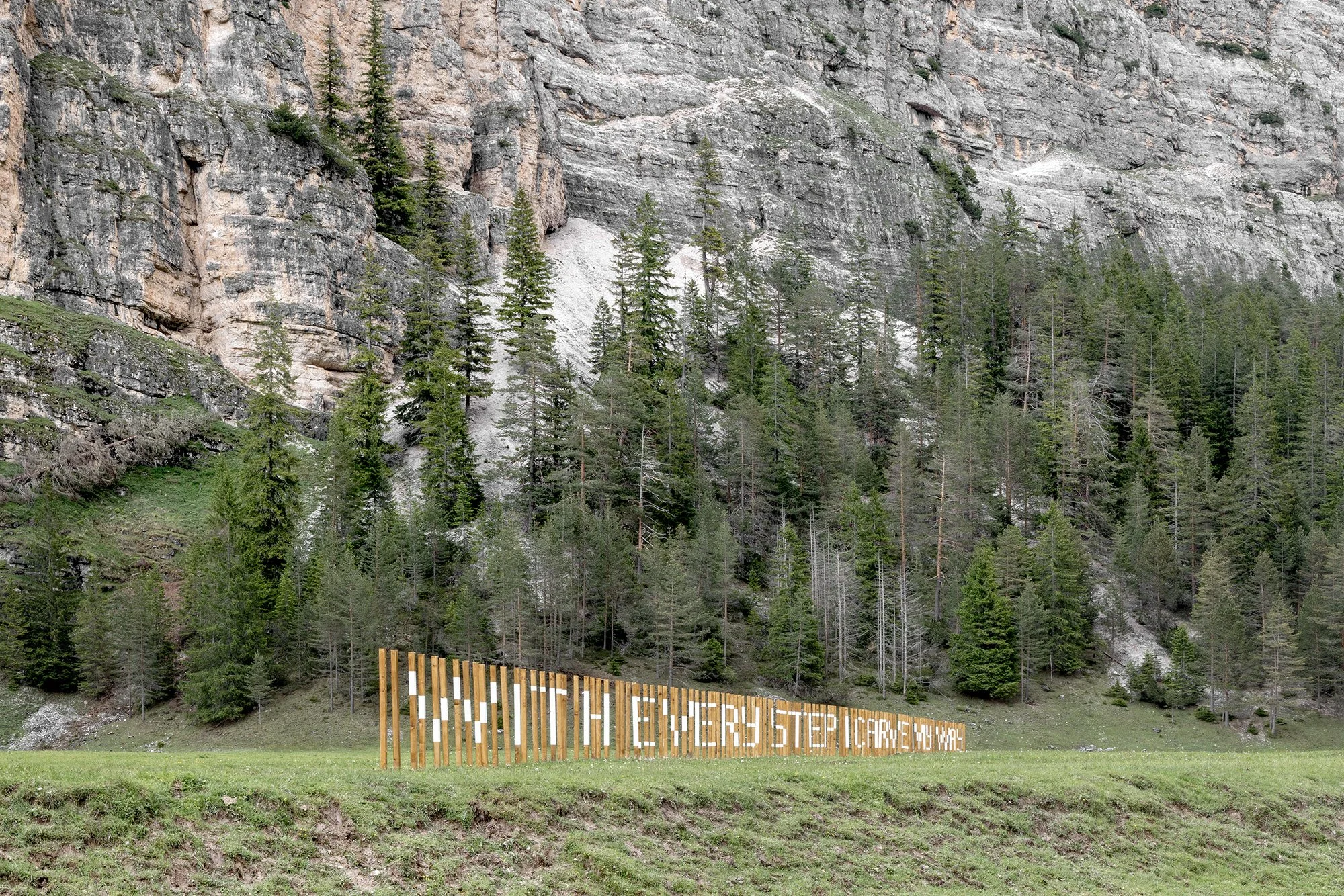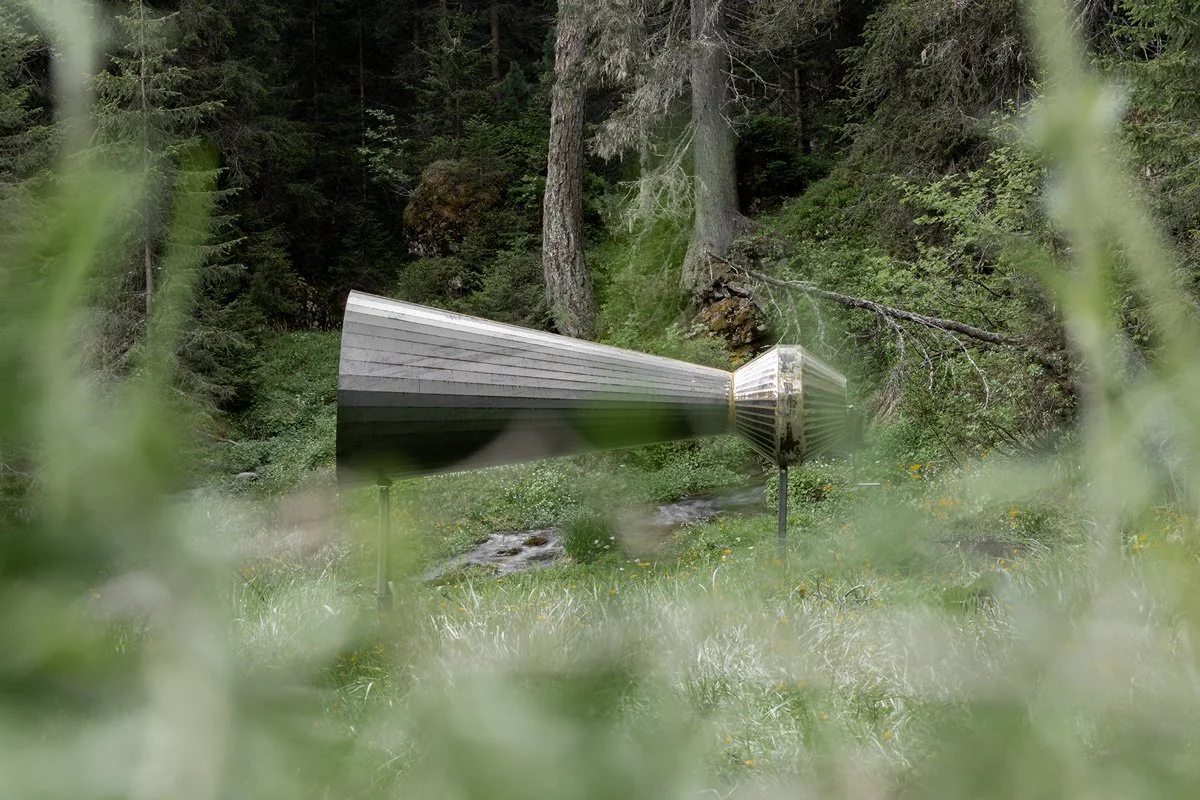With Every Step
Hans de Backer
Anamorphosis, which art historian Jurgis Baltrusaitis claimed was invented by Leonardo Da Vinci, uses the rules of perspective to deceive human perception, creating a visual illusion. Applying the same perspectival and optical principles, the message conveyed by this installation, which is divided into 146 fragments, one for each pole, will appear in its entirety only from a precise vantage point. Finding the exact position is a game of patience and willpower, just like hiking in the mountains, step by step, until you reach your goal. Furthermore, the hidden message reminds us how humanity has carved out its own path, both physical—understood as infrastructures necessary for the movement of people or things—and metaphorical. Today, we live in a hyper-connected world, and it’s difficult (and also not very ecological) to forge new paths. Thus, all that remains is to follow the ones that make us feel best, whether they are in the mountains, elsewhere, outside, or within ourselves.
Exhibit place Pederü
From the legendary wars of the Fanes Kingdom to the unfortunately real ones. In 1915, when Italy entered the First World War, the Austrians (the area was still part of the Austro-Hungarian Empire at the time) built a populous military village in Pederü. It was the encampment of the Kaiserjäger (the imperial hunters, i.e. the infantry of the army) who from here could easily reach some of the area’s battlefronts such as the Valparola Pass, Forcella Lerosa, Lagazuoi etc. In the 1920s, when the war was over, the military village was largely destroyed. A few huts were saved, among them the officers’ hut, which later became the refuge you can still find today, while the remaining ones were used as stables, warehouses or storage.
The reason why the camp was built in this location, apart from being strategic, is the abundance of water resources. In fact, very well known and abundant are, since ancient times, the natural springs that, even today, provide a large part of the population of San Vigilio di Marebbe (which annually consumes about 250 million litres) with water. The water reaches the springs after an underground route of over two kilometres that descends from the karstic plateau of Fanes. It re-emerges in Pederü and then returns underground, during many times of the year, hiding in the screes and stones of the Val di Marebbe. It hides underground during the autumn, winter and dry periods, but around June it re-emerges again further down the valley. Famous, for example, is the natural spring of the ‘Ega de San Vì’ (the spring of San Vito), which gushes out every year punctually in the middle of June (San Vito is celebrated on the 15th of this month) to dry out again in early autumn. Also famous is the nearby natural monument Les Fontanes (the Province of Bolzano has a special register of natural monuments, to which you will find the link below), where the water gushes out from forty springs, a true spectacle of nature that also feeds the stream.
The abundance of water was very important in the past. As early as 1296, in fact, there were no fewer than four mills on the Rio San Vigilio, and next to them, along a stretch of the stream just 3 kilometres long, no fewer than 30 craft enterprises settled over the centuries, such as sawmills, forges, wool carders, tanneries, carpentries and others. Today, these workshops have all disappeared, however, their place was taken by five power stations that manage to cover the entire needs of the municipality of San Vigilio di Marebbe.


















